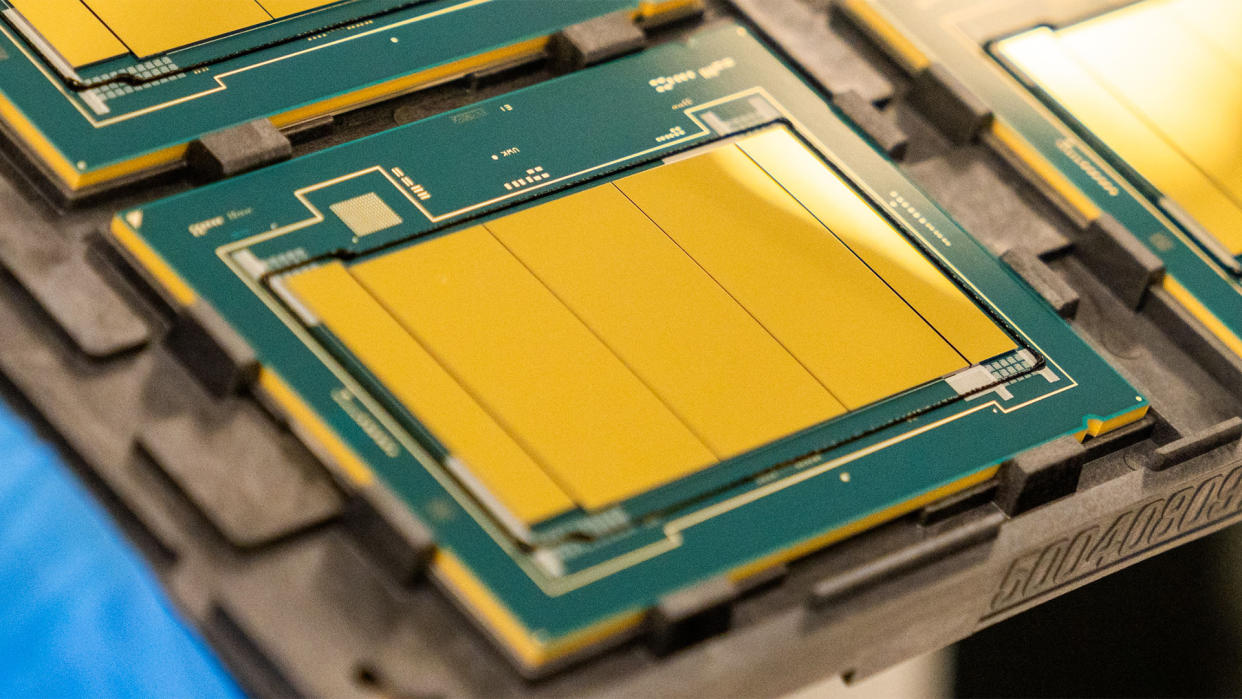Granite Rapids shows up on CPU-Z boasting 80 cores and 672MB of L3 cache

@yuuki_ans on X (Twitter) shared a CPU-Z screenshot of an 80-core Granite Rapids Intel Xeon engineering sample, displaying several major specifications of the new chip. The chip comes with 80 cores and also features 672MB of L3 cache, a 2.5 GHz max frequency, and a 350W TDP.
Sadly we have to take most of these specifications with a huge grain of salt, it's obvious that CPU-Z is not reporting some of the CPU specifications correctly. For instance, if you look at the thread count, CPU-Z displays a whopping 320 threads that are enabled on the CPU. Granted, this massive thread count might be legit, but there's nothing known about Granite Rapids that would indicate a massive change in Intel's hyperthreading technology would enable 320 threads on just 80 CPU cores.
But assuming that all of the other specs are legitimate, it looks like Intel is being super aggressive on its L3 cache upgrades compared to Emerald Rapids as well as core count increases. The massive cache size represents a nearly 6X capacity improvement from Intel's flagship Sapphire Rapids CPU and a 2X upgrade from Intel's flagship Emerald Rapids chip the Platinum 8592+. It is also just 96MB shy of AMD's EPYC 9384X and 9184X 3D-VCache CPUs which sport 768MB of L3 cache. Besides L3, the chip reportedly has 320MB of L2 cache and 10MB of L1 cache.
Core count is also massively increased. The 80-core Granite Rapids chip has 20% more cores than Intel's flagship Emeral Rapids 8592+ CPU and 25% more cores than its Sapphire Rapids flagship. This is the first Intel server CPU in a long while that actually comes close to matching AMD's mainstream EPYC server processors (not accounting for Zen 4c variants). We aren't even sure if this is the flagship SKU, so there could be even higher core count Granite Rapid chips on the horizon.
The chip's 350W TDP reveals that Intel is keeping its TDP configuration the same on Granite Rapids as it is on Sapphire Rapids and Emerald Rapids, at least on this 80-core model. This is good news for efficiency, and means that Intel is not boosting its TDP in line with the higher core counts Granite Rapids will be shipping with.
The CPU-Z screenshots also reveal performance benchmarks of the Granite Rapids chip, however, the results are so bad they don't give us any clues about the chip's real performance. For context, we can't find any CPU-Z benchmarks of Emerald Rapids, and after checking out a CPU-Z benchmark result we got from AMD's flagship EPYC 9654, the Granite Rapids chip is nowhere even close to the AMD CPU's performance level.
Granite Rapids is Intel's next-generation server CPU architecture that will likely be released in the next few months. The new architecture sports a brand-new performance core codenamed Redwood Cove with a host of performance enhancements and extra features compared to Sapphire Rapid's P-cores. The most noteworthy addition is the inclusion of AMX support with FP16 acceleration which is a key addition that will boost AI inference performance. It also comes with new prefetch and brand prediction tech as well as higher floating point IPC performance.
Granite Rapids will also be the first architecture to come with Intel's bleeding edge 3 nm Intel 3 process technology, which will bring an 18% performance-per-watt gain and high-density libraries that weren't included in the Intel 4 process. Intel was originally going to build Granite Rapids on the Intel 4 node, however it decided to delay Granite Rapids to 2024 to move it up a notch to Intel 3.
With all of these core, cache, and architecture improvements in mind, Granite Rapids is shaping up to be one of the largest performance jumps from Intel in a long time.

